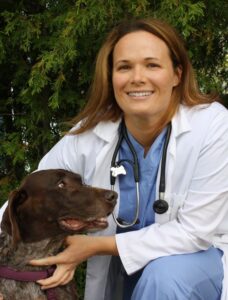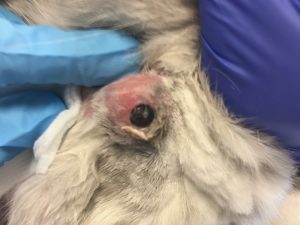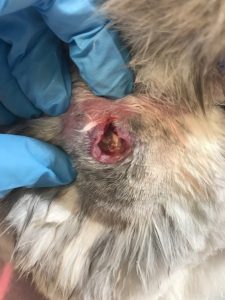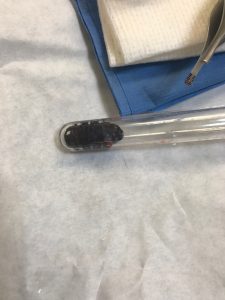-
Adopt
-
Veterinary Care
Services
Client Information
- What to Expect – Angell Boston
- Client Rights and Responsibilities
- Payments / Financial Assistance
- Pharmacy
- Client Policies
- Our Doctors
- Grief Support / Counseling
- Directions and Parking
- Helpful “How-to” Pet Care
Online Payments
Referrals
- Referral Forms/Contact
- Direct Connect
- Referring Veterinarian Portal
- Clinical Articles
- Partners in Care Newsletter
CE, Internships & Alumni Info
CE Seminar Schedule
Emergency: Boston
Emergency: Waltham
Poison Control Hotline
-
Programs & Resources
- Careers
-
Donate Now
 By Amanda Lohin, DVM
By Amanda Lohin, DVM
angell.org/emergency
emergency@angell.org
781-902-8400
MSPCA-Angell West, Waltham
Cuterebriasis is a relatively common condition that results from the migration of fly larvae through the bodies of small mammals. A cuterebra is the larval stage of the bot fly, which is found in most regions of North America. Bot flies are large, non-feeding flies and they tend to target small mammals (mostly rodents, including rabbits) as a host for their larvae.
Most cases in North America occur in the late summer/early fall. Bot flies will lay their eggs near the openings to small mammal burrows, so that when contact is made between the animal and the latent eggs, the eggs will hatch into larvae that will penetrate the skin, enter the body through an opening or be ingested. The life cycle of the fly requires migration through the soft tissue (muscle, fat, skin) of the animal, followed by a prolonged period of development to the maggot stage within a “warble” in the skin (a pocket created under the skin with a little air hole by the larva as it develops into a maggot).
Once the maggot stage has been reached within the host, the maggot will “drop off” (i.e. exit the host) and will continue to develop in the ground over winter until it hatches into the mature botfly in the spring. The time period where the larvae matures to the maggot stage within its mammal host usually lasts anywhere from 3 to 7 weeks. Although the intended mammal hosts are wild rodents, rabbits, etc, these ectoparasites are commonly seen in our domestic cats and dogs who sniff areas where the eggs are latent or stick their heads in rodent holes. For this reason, cuterebra are commonly found on the face, neck or even within the nostrils of cats and dogs. Rarely, in cats, cuterebra migration can lead to a condition called feline ischemic encephalopathy, where the parasite can migrate to the brain and cause damage to the brain tissue.
Clinical signs of cuterebras are usually limited to identification of a lump or hole in the skin where the cuterebra is located; however, larvae can migrate elsewhere in the body, including the brain (feline ischemic encephalopathy), pharynx/throat, nostrils and eyes/eyelids. In these cases, clinical signs would depend on the location affected. The most common finding is subcutaneous lesions, which result in a raised, red lump with a central hole that is usually about 0.5 cm in diameter.
Treatment of subcutaneous cuterebriasis is relatively simple. The most important aspect of treatment is removal of the larva/maggot. In most cases, the central hole must be enlarged to allow the larva/maggot to be removed without being ruptured, as rupturing the maggot can lead to anaphylaxis (a severe and potentially life threatening allergic reaction) in some animals. A secondary skin infection can sometimes occur, in which case antibiotics may be indicated.


